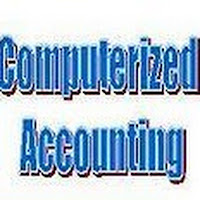Small and medium sized businesses can now buy ‘off the shelf’ accounting programs at remarkably low cost. Larger businesses will often have customized programs made for their business. The accounting programs carry out functions such as invoicing, dealing with payments, paying wages and providing regular accounting reports such as trading and profit and loss accounts and balance sheets.
·
Automatic updating of suppliers'
accounts in the purchases ledger
·
Recording of bank receipts
·
Making payments to suppliers and for
expenses
·
Automatic updating of the general
ledger
·
Automatic adjustment of stock
records
·
Integration of a business database
with the accounting program
·
Automatic calculation of payroll and
associated entries
Computerized accounting programs
can provide instant reports for management, for example:
·
Aged debtors’
summary – a summary of customer accounts showing overdue amounts
·
Trial balance,
trading and profit and loss account and balance sheet
·
Stock
valuation
·
Sales
analysis
·
Budget
analysis and variance analysis
·
GST/VAT
returns
·
Payroll
analysis
|
When using a computerized accounting
system the on computer, input screens have been designed for ease of use.
The main advantage is that each transaction needs only to be inputted once,
unlike a manual double entry system where two or three entries are required.
The computerized ledger system is
fully integrated. This means that when a business transaction is inputted
on the computer it is recorded in a number of different accounting records at
the same time.
The main advantages of a computerized accounting system are
listed below:
·
Speed – data entry onto the computer with its formatted screens
and built-in databases of customers and supplier details and stock records can
be carried out far more quickly than any manual processing.
·
Automatic
document production – fast and accurate invoices, credit notes, purchase orders,
printing statements and payroll documents are all done automatically.
·
Accuracy – there is less room for errors as only one accounting entry
is needed for each transaction rather than two (or three) for a manual system.
·
Up-to-date
information – the accounting records are automatically updated and so
account balances (e.g. customer accounts) will always be up-to-date.
·
Availability of
information – the data is instantly available and can be made available
to different users in different locations at the same time.
·
Management
information – reports can be produced which will help management monitor
and control the business, for example the aged debtors analysis will show which
customer accounts are overdue, trial balance, trading and profit and loss
account and balance sheet.
·
GST/VAT return – the automatic creation of figures for the regular GST/VAT
returns.
·
Legibility –
the onscreen and printed data should always be legible and so will avoid errors
caused by poor figures.
·
Efficiency – better use is made of resources and time; cash flow should
improve through better debt collection and inventory control.
·
Staff
motivation – the system will require staff to be trained to use new
skills, which can make them feel more motivated. Further to this with
many ‘off-the-shelf’ packages like MYOB the training can be outsourced and thus
making a particular staff member less critical of business operations.
·
Cost savings – computerized accounting programs reduce staff time doing
accounts and reduce audit expenses as records are neat, up-to-date and
accurate.
·
Reduce
frustration – management can be on top of their accounts and thus reduce
stress levels associated with what is not known.
·
The ability to
deal in multiple currencies easily – many
computerized accounting packages now allow a business to trade in multiple
currencies with ease. Problems associated with exchange rate changes are
minimized.
for detailed information visit our website : www.lotuspk.netwww.lotuspk.net

